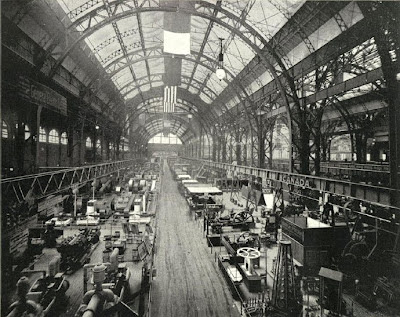 |
| Morris's Oxford Union mural, How Sir Palomydes Loved La Belle Iseult with Exceeding Great Love out of Measure, and how She Loved Him Not Again but Rather Sir Tristram |
 |
| Morris struggled with the figures in his mural. |
In 1856, at the age of twenty-two, William Morris decided to become a painter. It's not a coincidence that this decision came after just a few months of friendship with one of his heroes, the painter Dante Gabriel Rossetti. At the time, Rossetti had very forceful views, which placed painters above everyone else. According to a friend of his, he claimed that if “any man had poetry in him, he should paint it.” Morris found Rossetti's arguments irresistible, and by July he was writing: “Rossetti says I ought to paint... now as he is a very great man, and speaks with authority and not as the scribes, I must try...” He would never succeed, and his attempts would often drive him wild with frustration.
Very little evidence survives of
Morris's long struggle with figure sketching and painting. Morris
would be pleased with this situation: indeed, he probably destroyed
many of his early works himself. The only canvas painting spared, La Belle Iseult, is
good enough to suggest that he was a fine painter, but it was worked on by a number of Morris's
friends, including Rossetti, after it left his hands. To Morris's dismay
however, an unflattering example of his figure painting did survive,
and can be seen to this day.
When Rossetti gathered a group of artists to paint murals in the new Oxford Union building in 1857, Morris agreed to do one of the panels. After being mocked for his figure of Iseult, who apparently looked like an “ogress”, Morris altered the painting, and covered over much of the panel with a twisting thicket of plants and sunflowers. The result was a huge swathe of green, with the rather crude faces of the lovers Tristram and Iseult peeping out in the upper right corner, and the jealous Sir Palomydes watching them from the left.
Morris was embarrassed by the result, writing twelve years later “I believe it has some merits as to colour, but I must confess I should feel much more comfortable if it had disappeared from the wall, as I'm conscious of it being extremely ludicrous in many ways.” When he wrote those words, his wish was coming true. The murals were fading rapidly, and were very difficult to see. It was only later that a restoration revealed the original in all of its awkward glory.
When Rossetti gathered a group of artists to paint murals in the new Oxford Union building in 1857, Morris agreed to do one of the panels. After being mocked for his figure of Iseult, who apparently looked like an “ogress”, Morris altered the painting, and covered over much of the panel with a twisting thicket of plants and sunflowers. The result was a huge swathe of green, with the rather crude faces of the lovers Tristram and Iseult peeping out in the upper right corner, and the jealous Sir Palomydes watching them from the left.
Morris was embarrassed by the result, writing twelve years later “I believe it has some merits as to colour, but I must confess I should feel much more comfortable if it had disappeared from the wall, as I'm conscious of it being extremely ludicrous in many ways.” When he wrote those words, his wish was coming true. The murals were fading rapidly, and were very difficult to see. It was only later that a restoration revealed the original in all of its awkward glory.
This experience pushed Morris ever closer to the decorative arts, for although he disliked his wall mural, he was very pleased with his ceiling design, a flowing pattern that was very capably done. Sadly, this pattern can't be seen any more, as Morris re-painted the ceiling to a new design in 1875.
If you haven't been to see the Oxford
Union Murals, then watch this video prepared by Oxford Brookes University. It was filmed at night, so the murals—normally hard to see for all the sunlight—come out beautifully.
They focus on a few of the murals, including Rossetti's and Morris's,
while Dr. Christiana Payne and Nancy Langham discuss them.
Unattributed Morris quotes in today's post come from Norman Kelvin's The Collected Letters of William Morris, Vol I.
The Ogress comment was made by Val Prinsep, and can be seen in Fiona MacCarthy's biography, William Morris: A Life for Our Time.
To read more about Morris's canvas painting, see Jan Marsh's article "La Belle Iseult" in the Summer 2011 edition of the Journal of William Morris Studies. (Vol XIX, Number 2)
There's also a master's thesis on the topic of the murals, here.
